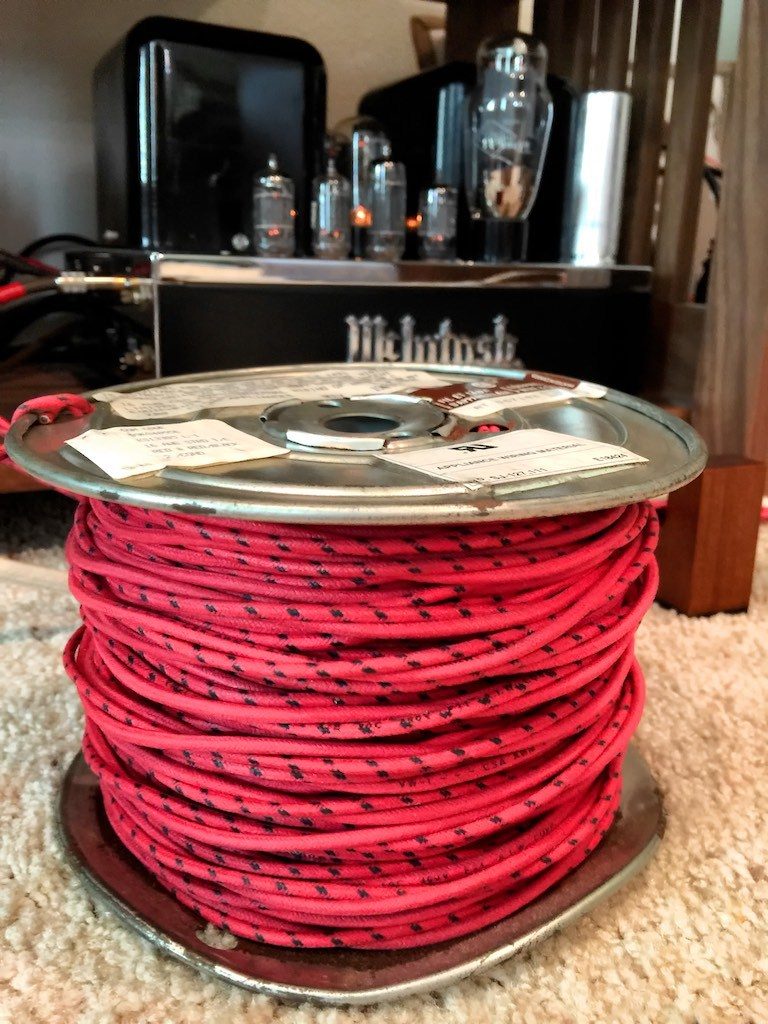A few points...
- Wire will corrode if exposed to air. You need a dielectric that will prevent this and you should protect the terminations as well.
- Duelund wire is very colored. I've used the silver and copper, and it's impossible to predict results because it's so far from neutral. Even Jeff Day admits that Duelund wire works well in some applications and not others. I got tired of sending out cables that didn't work for so many people. My UPOCC cables are much more neutral and thus much more predictable as far as how they will work in a system, they will produce a much more immersive and 3-D soundstage and more distinct timbre vs Duelund. Also, vintage WE wire is much better than Duelund if you really want that vintage tinned-copper sound. I understand why some like it, but it's a tweak that will result in much lower resolution vs other alternatives.
- Mogami copper wire is also very warm sounding but not quite as colored as Duelund. Both are poor choices IMO. (Sorry to those who like it, no offense intended). This kind of wire is a great way to permanently handicap your system.
- UPOCC silver with teflon insulation is the most neutral wire available, period. Nothing is even close. It shows the most resolution, the most clarity, the most difference between recordings and the most distinct timbre. It doesn't round-over leading edges not does it exaggerate them. Some find it too "dry" sounding depending on the system so I often use gold, ribbon shaped conductors and/or heavier gauges to avoid that. This does add coloration but it's subtle and unobtrusive vs other options. It's like a scalpel while Duelund oiled wire is like a sledgehammer.
- For woofers silver plated copper with teflon is really hard to beat, it's much less $$$ vs pure UPOCC silver and since you don't have to worry about highs you won't have to worry about the fact it's less refined vs UPOCC silver. If the woofer plays over ~500 Hz then I'd look at pure UPOCC silver though as it's getting into the mids, especially with a xo of more gradual slope.
- Inside a speaker cab is a high vibration environment and you should take this into account. Ptp runs of solid-core wire without securing the wire or adding damping is not going to work out very well...
- Run internal wire in a noise-canceling geometry wherever possible. IDK why, but many folks feel like actual cables are no longer necessary once you get inside the speaker and they just use single runs of wire everywhere with no regard for seemingly anything. IMO a twisted pair is a minimum requirement and single runs of signal or ground should be minimized and kept as short as possible.
- Use good binding posts and solder the wire to the drivers or use Furutech pure copper push-connectors. Steel push-connectors as commonly used sound horrible. I'd recommend WBT silver binding posts and spades if you don't mind the high prices. Furutech has some great options too like FT-865R at lower prices and their FT-211R spades are excellent.
- I offer any of my cables as custom internal cable. Including the high-efficiency cables for mids and highs...

I can also sell any wire I use.











